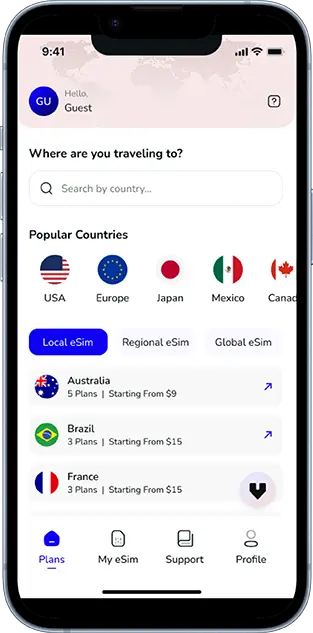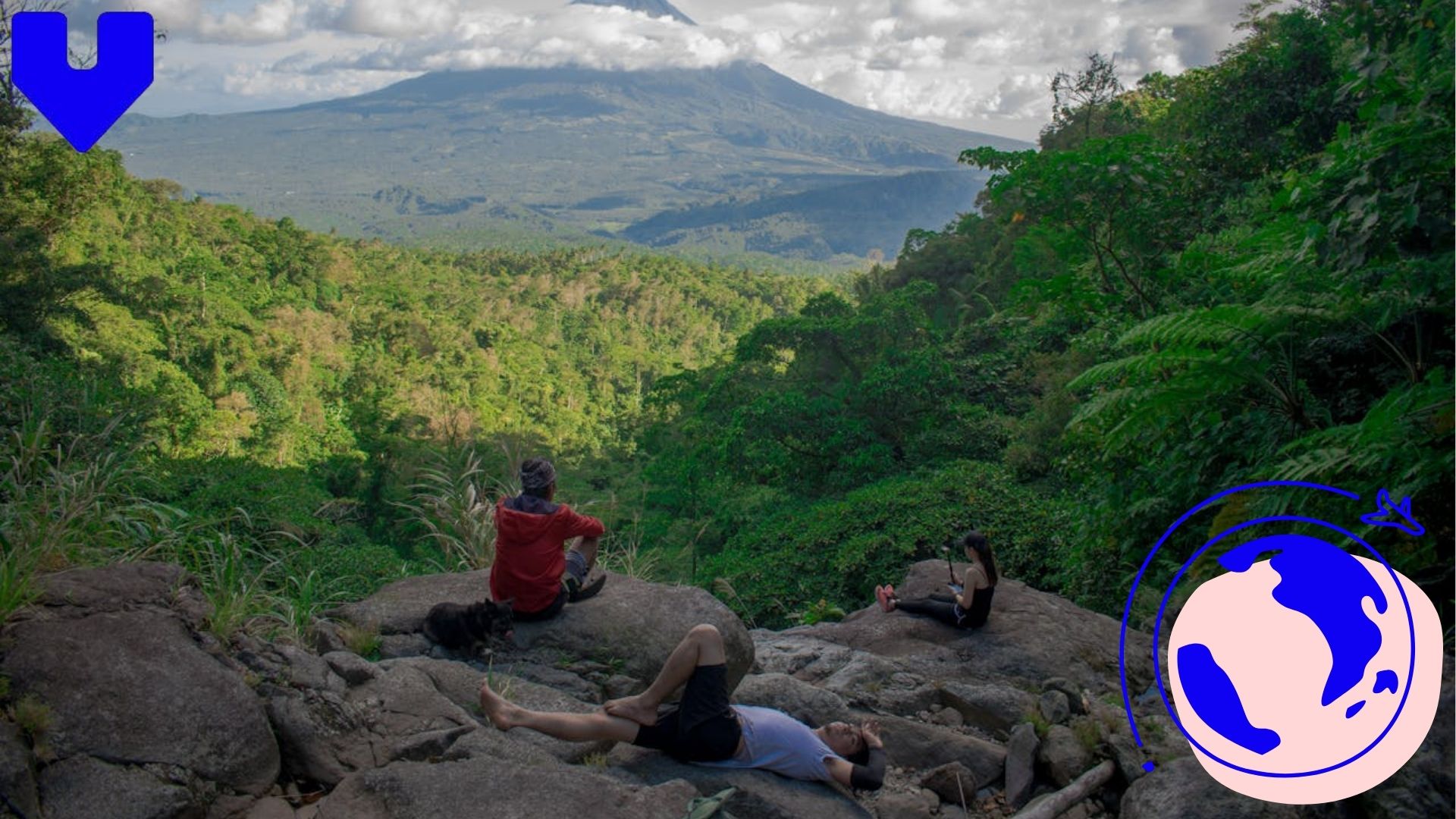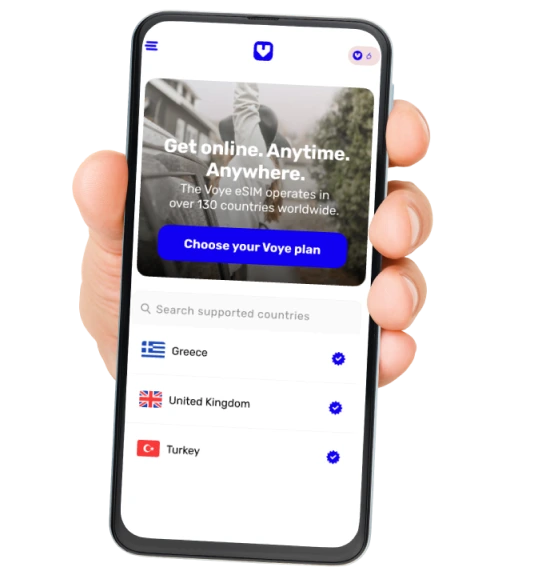Note that iPhone devices from Mainland China aren’t eSIM compatible. Also iPhone devices from Hong Kong and Macao aren’t compatible (except for iPhone 13 Mini, iPhone 12 Mini, iPhone SE 2020 and iPhone XS)
If you’re flying into Manila, you’ve already set foot in one of Southeast Asia’s most dynamic capitals—a gateway to over 7,000 islands that make up the breathtaking Philippines. But how do you get from Manila to other regions across the country? What’s the best way to manage payments, find local eats, and stay connected while exploring paradise?
This guide covers everything you need to know about traveling from Manila to the rest of the Philippines—from transport and fees to food, stays, and eSIM connectivity with Voye Global.
1. Starting Point: Manila — The Gateway to the Islands
Manila, the country’s capital, is not just a stopover—it’s a bustling hub blending Spanish colonial heritage with modern urban culture. Before you head out to the islands, spend a day exploring Intramuros, Binondo (the world’s oldest Chinatown), and the vibrant Manila Bay sunset.
Pro Tip: Download a ride-hailing app (Grab or JoyRide) and use your Voye eSIM for instant 5G connectivity without hunting for Wi-Fi.
With reliable internet from the moment you land, you can easily manage bookings, payments, and communication.
2. How to Travel from Manila to Other Philippine Destinations
The Philippines’ geography means you’ll likely combine air, sea, and land travel to reach your dream destinations. Here’s how to navigate each option.
a. Domestic Flights (Fastest Option)
Best for: Long distances (Manila to Cebu, Davao, Boracay, Palawan)
Airlines: Cebu Pacific, Philippine Airlines, AirAsia Philippines
- Flight duration: 1 to 2 hours for most destinations
- Average fare: USD $40–$120 round trip (₱2,300–₱7,000) depending on timing
- Payment options: Credit/debit cards, GCash, Maya, or PayPal accepted
Top Routes from Manila:
- Manila → Cebu: ~1h 25m
- Manila → Davao: ~1h 50m
- Manila → Puerto Princesa (Palawan): ~1h 20m
- Manila → Kalibo or Caticlan (Boracay): ~1h
Tip: Book early on local airline apps while connected via your Voye eSIM—it ensures fast browsing and instant mobile ticketing, especially when airline websites load slowly on weak public Wi-Fi.
b. Ferries and Fast Crafts (Scenic but Slower)
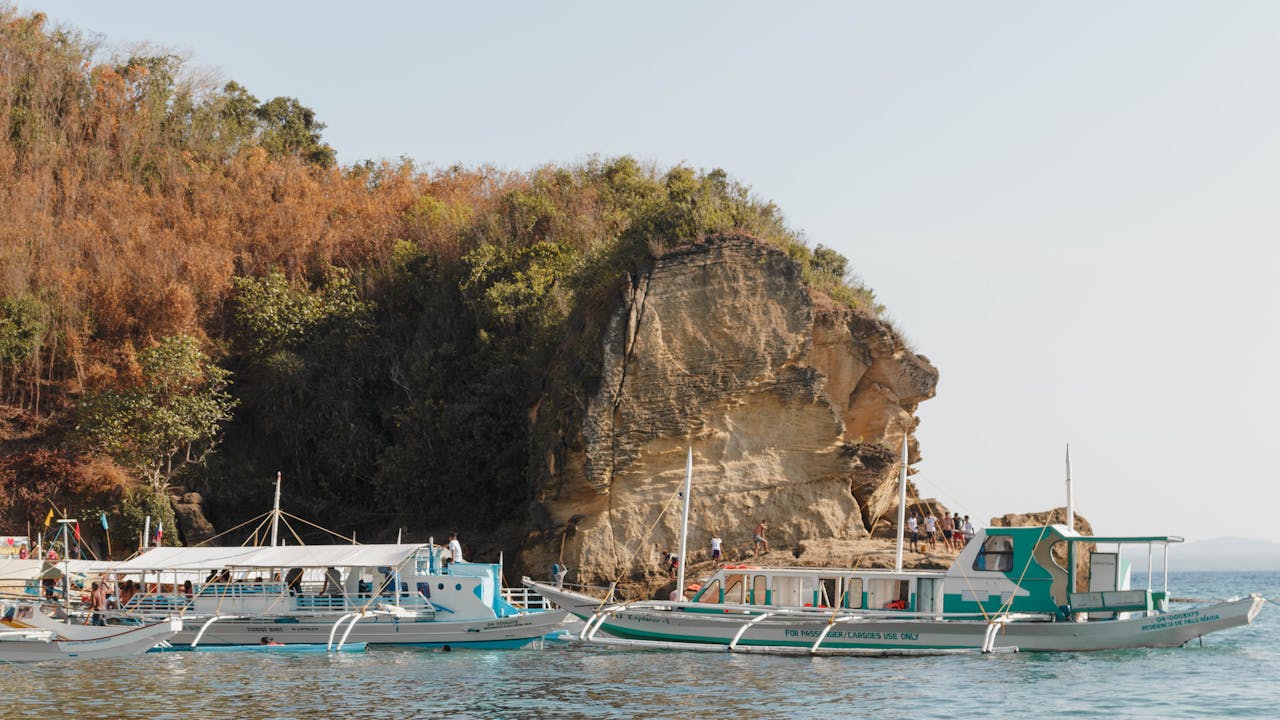
Best for: Island-hopping between nearby regions like Luzon, Visayas, and Mindanao.
Operators: 2GO Travel, OceanJet, SuperCat, Montenegro Lines
- Duration: 4 to 24 hours depending on route
- Fares: From ₱700 to ₱2,500 ($12–$45)
- Booking: Online via 2GOTravel.com or through local agents
- Payment: Cards, e-wallets, or cash accepted
Why it’s worth it: You’ll get scenic ocean views and meet locals on board. Some ferries offer private cabins and dining areas with Filipino meals like adobo, pancit, and sinigang.
c. Buses and Vans (For Budget or Local Trips)
Best for: Land travel to nearby provinces like Batangas, Tagaytay, Baguio, or La Union.
Duration: 2–8 hours depending on traffic and route
Average fare: ₱150–₱800 ($3–$15)
Major Bus Terminals in Manila:
- Cubao (Quezon City) – Northbound trips
- Buendia/Pasay – Southbound trips
- PITX (Parañaque) – Mixed domestic routes
Insider Tip: Pay with GCash or Maya where available. Most stations now have QR payment options. Your Voye eSIM ensures these digital apps work smoothly without roaming charges.
Stay Connected Across the Islands
Stay connected across the Philippines with fast, reliable 5G from Voye eSIM—no SIM swapping, no roaming hassles.
4. Money Exchange, Cash, and Card Payments in the Philippines
Before heading out from Manila to explore the rest of the Philippines, understanding how to handle your money can make your trip smoother. The official currency is the Philippine Peso (₱ or PHP), and while major cities are card-friendly, smaller towns and islands still rely heavily on cash.
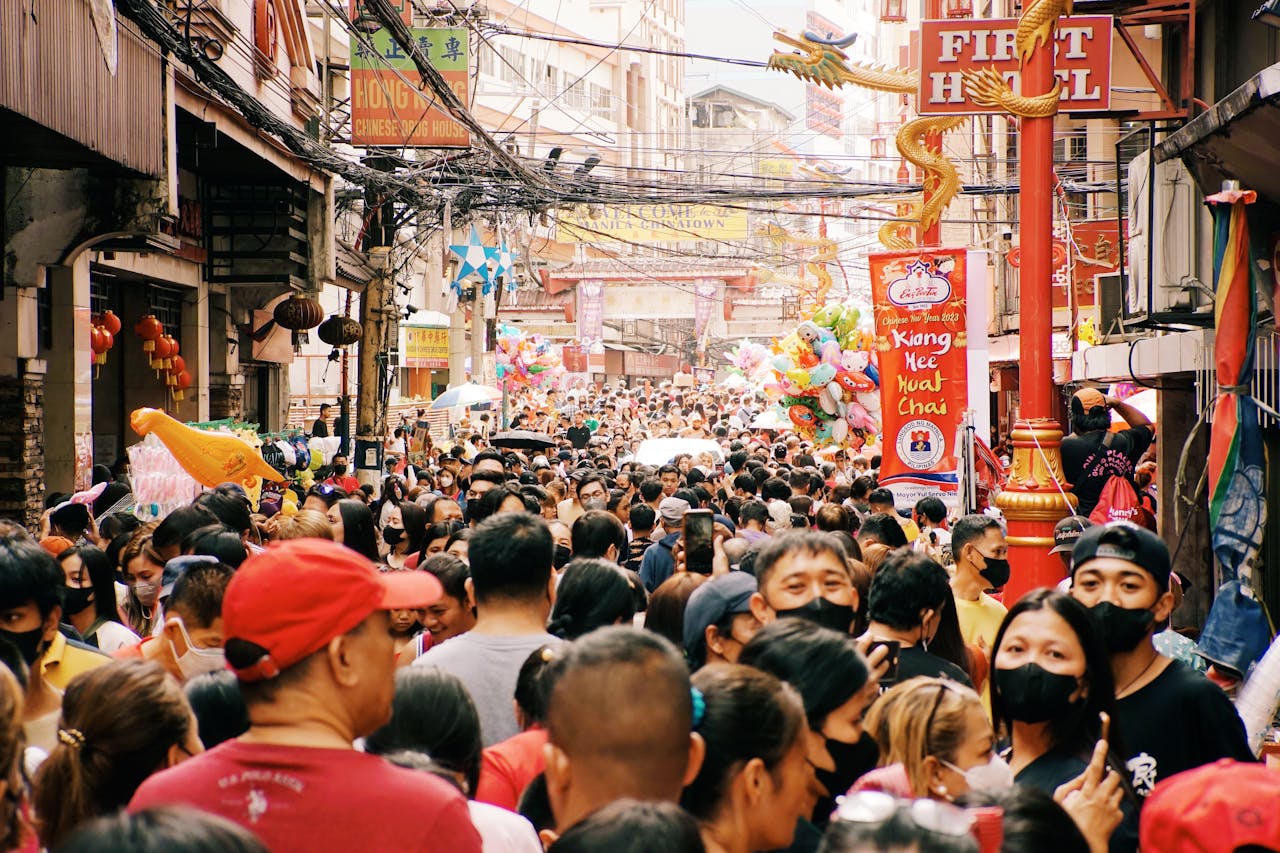
a. Currency Exchange
You can exchange foreign currency at:
- Airport exchange counters (slightly higher rates but convenient on arrival)
- Local banks and money changers in malls or tourist areas
- Authorized forex shops like Czarina or Sanry’s (usually best rates)
Pro Tip: Always compare rates before exchanging large amounts. In Manila, mall-based forex shops often offer better rates than airports.
Exchange rate snapshot:
1 USD ≈ ₱57 (approximate, varies daily)
You can check real-time rates on your phone using Voye eSIM, ensuring you always get the best deal before exchanging.
b. How Much Cash to Carry
For city stays, carry around ₱3,000–₱5,000 (USD $50–$90) in cash for small purchases, local markets, transport, and street food.
In more remote islands where ATMs are limited (like Siargao or El Nido), it’s wise to have ₱7,000–₱10,000 ($120–$175) ready.
Keep small bills (₱20, ₱50, ₱100) for tricycle rides, jeepneys, and convenience stores.
Safety Tip: Use hotel safes for extra cash, and avoid carrying large amounts when island-hopping.
c. Card Payments & Digital Wallets
Credit and debit cards are accepted in most hotels, restaurants, and malls in Manila, Cebu, and Boracay.
- Accepted cards: Visa, Mastercard, and American Express.
- Contactless payments: Increasingly available at cafes and large chains.
- Digital wallets: GCash and Maya dominate local mobile payments.
Many travelers use GCash by linking an international card (via the app) to pay for food, rides, and shopping—perfect when you have consistent mobile data through your Voye eSIM.
Quick Tip: Always notify your bank before traveling to avoid foreign transaction blocks. When paying by card, choose “charge in local currency (PHP)” to avoid dynamic conversion fees.
d. ATMs and Withdrawal
ATMs are widespread in major cities but can be scarce on smaller islands.
- Withdrawal fee: Around ₱250 ($4) per transaction for foreign cards.
- Recommended banks: BPI, BDO, Metrobank (more reliable for international withdrawals).
Use Google Maps via Philippines eSIM from Voye to locate nearby ATMs and check service availability in real time.
e. Budgeting Smart
Daily travel budgets vary depending on your travel style:
- Budget traveler: ₱2,000–₱3,000 ($35–$55) per day
- Mid-range traveler: ₱4,000–₱6,000 ($70–$100)
- Luxury traveler: ₱8,000+ ($140+)
Having multiple payment methods—cash, card, and a digital wallet—ensures you’re covered in any situation.
Traveler Insight: Using Voye eSIM keeps you connected to banking apps, live currency converters, and mobile wallets without worrying about roaming or Wi-Fi. Whether you’re topping up a GCash account, finding an ATM, or checking exchange rates, having stable data is the key to managing your travel funds smartly.
5. What to Eat: A Filipino Food Adventure
Filipino cuisine is as diverse as its islands—each region has its signature flavor.
Must-Try Dishes
- Adobo: Braised chicken/pork in soy sauce and vinegar
- Sinigang: Tamarind-based sour soup
- Lechon: Crispy roasted pig, a festive staple
- Kare-Kare: Peanut stew with oxtail and vegetables
- Halo-Halo: Shaved ice dessert with fruits, jelly, and milk
Street Eats in Manila: Try isaw (grilled intestines), fish balls, and taho (sweet tofu drink) sold by friendly street vendors.
Many local restaurants and cafés also accept QR payments. With Voye eSIM, you can easily search for nearby food spots, check reviews, and pay digitally without Wi-Fi dependency.
6. Asian Cuisine in Manila: A Global Food Experience
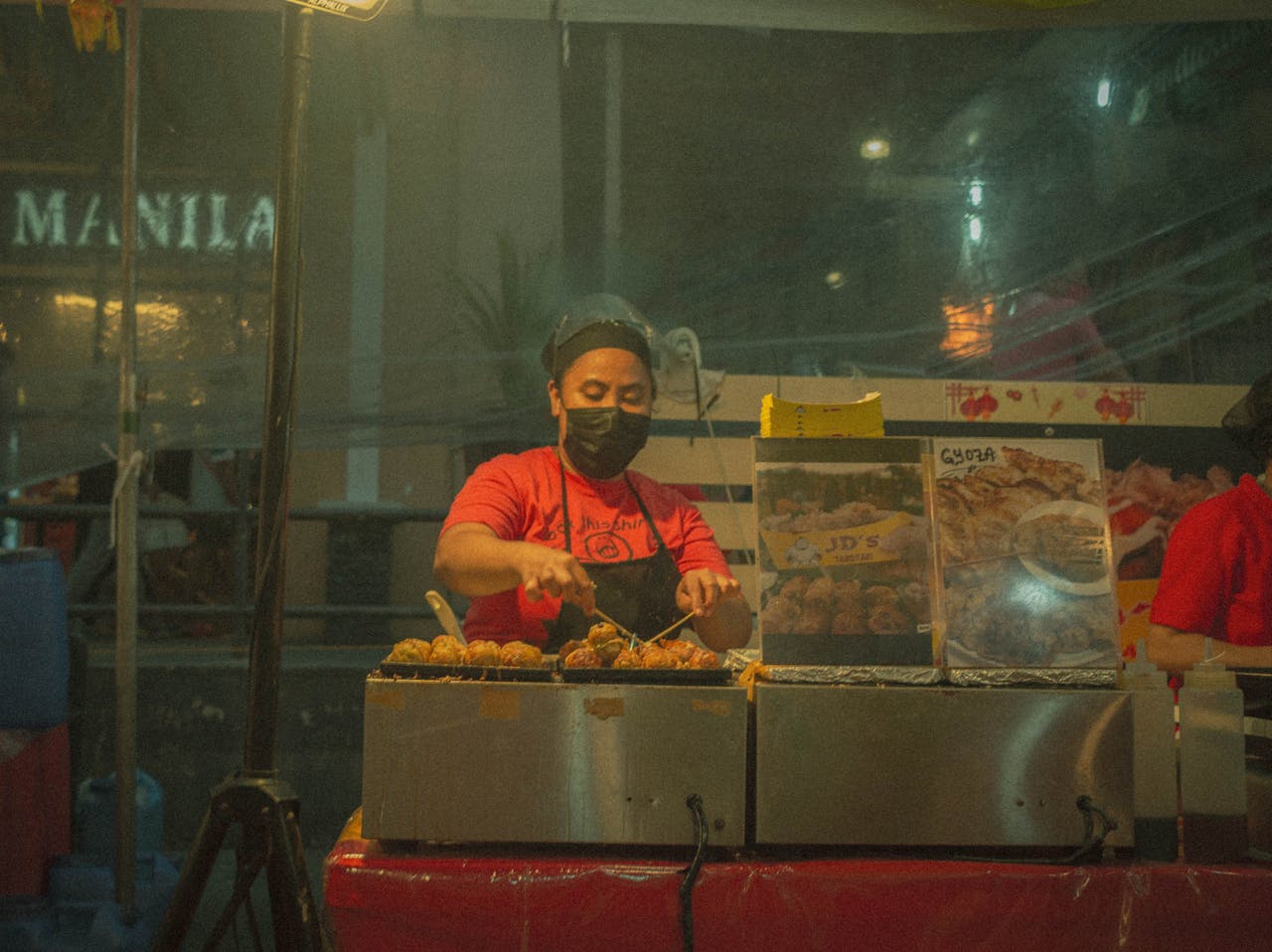
Beyond Filipino favorites, Manila offers some of the best Asian cuisine in Southeast Asia, thanks to its rich cultural blend and thriving dining scene. Whether you crave sushi, kimchi, noodles, or curry, the city has it all.
Japanese Cuisine
From quick ramen bars to upscale sushi dining, Japanese food is everywhere.
- Top spots: Mendokoro Ramenba (Makati), Ooma (BGC), and Izakaya Kikufuji (Little Tokyo).
- Must-try: Tonkotsu ramen, wagyu beef, and tempura.
Korean Flavors
The city’s K-culture boom means endless Korean BBQ restaurants and cozy bibimbap joints.
- Best areas: Poblacion, Makati; Tomas Morato, Quezon City.
- Try: Samgyeopsal (grilled pork belly), kimchi stew, and japchae.
Chinese Classics
Visit Binondo, the world’s oldest Chinatown, for authentic Chinese dining.
- Favorites: Dumplings, siopao, pancit, and hopia.
- Don’t miss: Wai Ying Fastfood or Dong Bei Dumplings.
Thai & Vietnamese Favorites
Fresh and flavorful dishes from Bangkok to Saigon are easy to find.
- Top spots: Mango Tree (Thai), Bawai’s (Vietnamese).
- Must-try: Pad Thai, pho, and green curry.
Indian & Middle Eastern
For spice lovers, Manila offers delicious Indian and Persian restaurants.
- Popular picks: New Bombay, Hossein’s, Kashmir.
- Order: Chicken tikka, biryani, and shawarma.
With your Voye eSIM, you can explore food guides, use GrabFood for deliveries, and find directions to restaurants instantly—perfect for culinary travelers who love discovering new flavors.
For more insider tips on navigating Manila—like how to beat traffic, where to find the best local spots, and smart travel hacks—you can also check out our “Travel Hacks: Manila, Philippines” guide. (Feel free to click through for extra tricks and local know-how on your arrival.) → Travel Hacks: Manila, Philippines
7. Understanding Filipino Culture and Language
a. Language
- Filipino (Tagalog) is the national language.
- English is widely spoken, especially in cities and tourist areas.
You’ll find it easy to communicate in English for booking, directions, and dining.
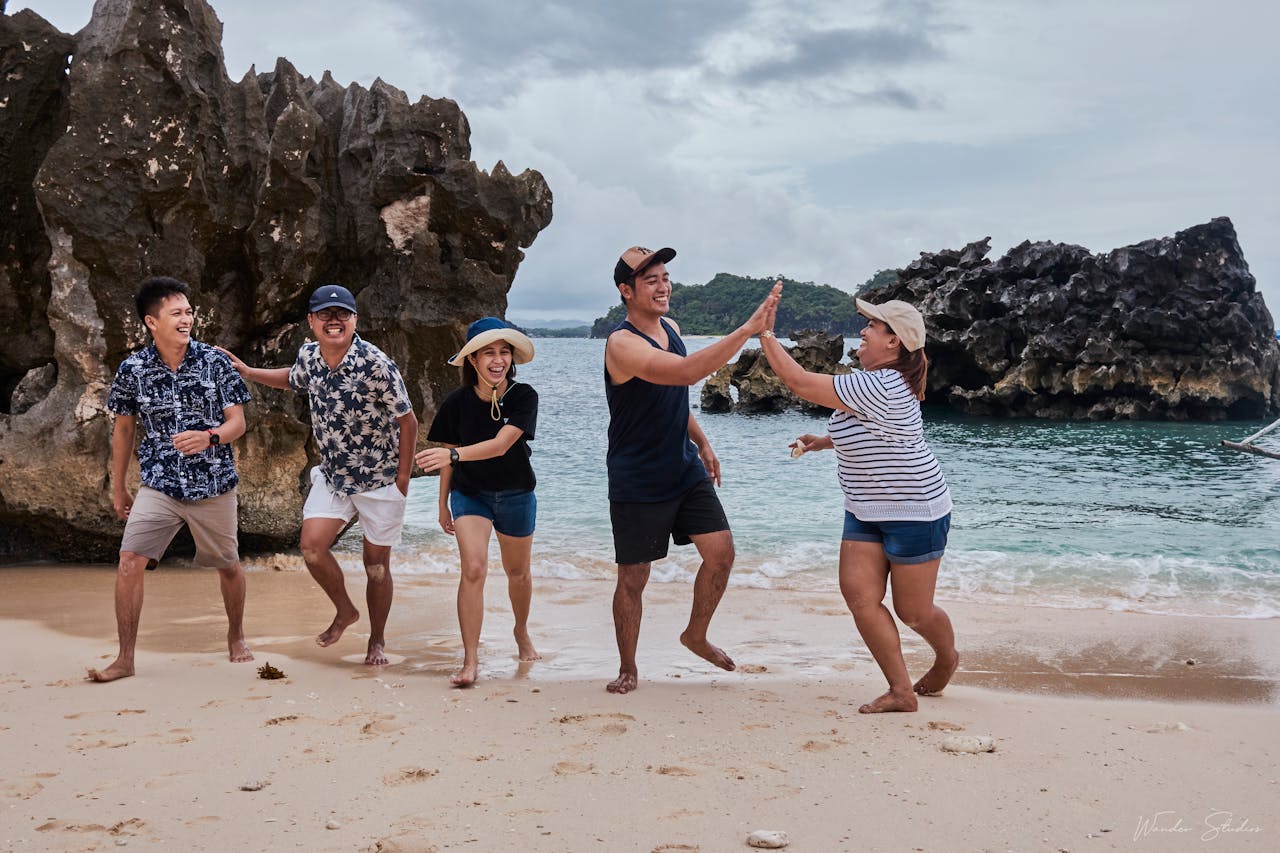
b. Culture & Etiquette
- Filipinos are warm, friendly, and respectful.
- A polite “po” or “opo” shows courtesy.
- Always smile—Filipinos value friendliness as much as hospitality.
- Dress modestly in rural areas and churches.
Fun fact: Karaoke is a national pastime—you might get invited to sing even if you’re a stranger!
8. Staying Connected: Why Voye eSIM Is the Best Travel Companion
Whether you’re navigating Cebu’s coral reefs, booking a tricycle in El Nido, or live-posting a Manila Bay sunset, staying connected matters. That’s where Voye eSIM makes all the difference.
Why Choose Voye eSIM?
- Instant activation – Scan the QR code upon arrival and go online in minutes.
- Wider coverage – Works seamlessly across Luzon, Visayas, and Mindanao.
- 5G/4G reliability – Stay connected even in coastal or mountainous regions.
- No SIM swapping – Keep your original number active.
- Affordable data plans – Choose from flexible daily, weekly, or monthly options.
- Secure online payments – Purchase your eSIM directly from Voye Global.
Coverage Overview
| Region | Coverage Quality | Network Speed |
|---|---|---|
| Manila | Excellent | 5G |
| Cebu | Excellent | 5G |
| Palawan | Good | 4G+ |
| Boracay | Excellent | 5G |
| Siargao | Good | 4G |
| Baguio | Good | 4G |
Pro Traveler Tip: Switch to Voye eSIM before leaving your hotel. You’ll enjoy uninterrupted data for maps, booking, and translation apps even on island transfers.
9. How to Enjoy the Philippines Like a Local
- Try local transport: Ride a jeepney or tricycle at least once.
- Eat where locals eat: Street food stalls and carinderias (small eateries) often serve the best flavors.
- Respect nature: Dispose of trash properly, especially at beaches.
- Negotiate with a smile: Haggling is fine in markets—but always stay polite.
- Stay flexible: Island weather changes quickly; have backup plans.
- Use eSIM maps: Google Maps, Grab, and Klook run smoothly with Voye eSIM.
- Share and connect: Filipinos love social media—share photos, tag new friends, and use local hashtags like #ItsMoreFunInThePhilippines.
Your Journey, Your Connection
Exploring beaches, mountains, and cities is easier when your phone never loses signal.
10. Safety & Travel Tips
- Keep photocopies of your passport and e-ticket.
- Use digital payments or small bills to avoid handling large cash.
- Drink bottled or purified water.
- Use Voye eSIM for instant access to translation tools or ride-hailing apps.
- In case of emergency –
| AGENCY | TRUNK & DIRECT LINE | AREA |
|---|---|---|
| Emergency 911 National Office | (02) 925-9111 (02) 928-7281 [telefax] +63966-5000-299 [Globe] +63932-318-0440 [Smart] | NCR NCR |
| Bureau of Fire Protection | (02) 426-0219 (02) 426-3812 (02)426-0246 | NCR NCR NCR |
| Philippine National Police | (2) 722-0650 +63917-847-5757 | NCR NCR |
11. Final Thoughts
Traveling from Manila to the Philippines’ islands is a journey through contrast—modern skylines giving way to turquoise lagoons, busy markets leading to quiet palm shores. Whether you’re flying, sailing, or exploring by land, the country rewards curiosity with warmth, color, and connection.
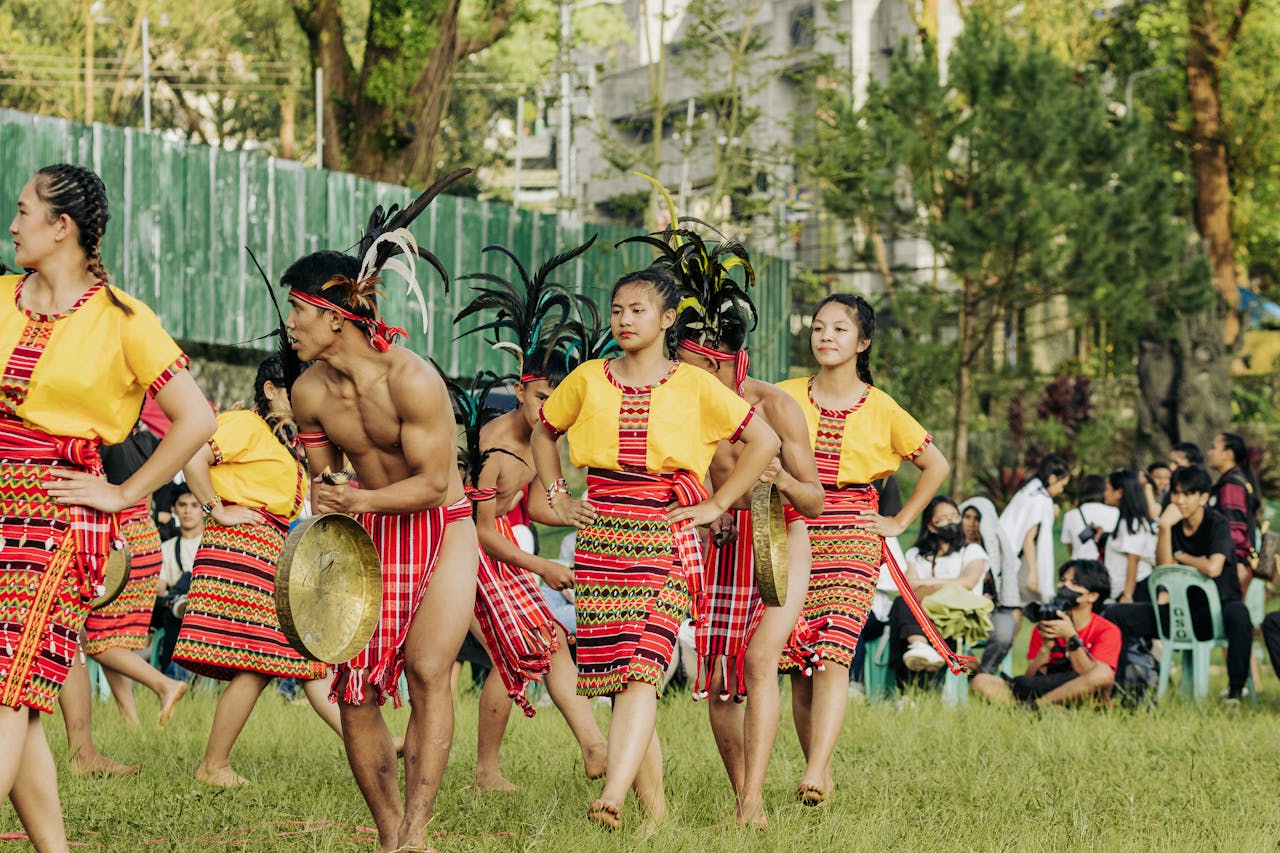
From planning and payments to enjoying street food and Asian cuisine, your best travel companion will be reliable connectivity. With Voye eSIM, you’re free to explore without worrying about roaming, lost SIMs, or Wi-Fi dead zones.
Stay connected. Stay inspired.
Discover the Philippines—seamlessly—with Voye Global.
FAQs
1. What’s the best way to travel from Manila to Cebu?
A short domestic flight (around 1 hour 25 minutes) is the most convenient option.
2. Are digital payments common in the Philippines?
Yes, most stores and restaurants accept e-wallets like GCash, Maya, and cards.
3. Do I need a SIM card or can I use an eSIM?
Travelers can use an eSIM like Voye Global for faster setup, reliable 5G, and no physical SIM swapping.
4. Is English widely spoken?
Yes, English is used across the country, especially in tourist and business areas.
5. Does Manila offer Asian cuisine?
Absolutely. From sushi and ramen to Thai curries and Indian biryani, Manila’s dining scene is rich with Asian flavors.
6. Can I use my eSIM for multiple islands?
Yes. Voye eSIM works across all major islands, including Luzon, Visayas, and Mindanao.
Seamless Mobile Data Everywhere
